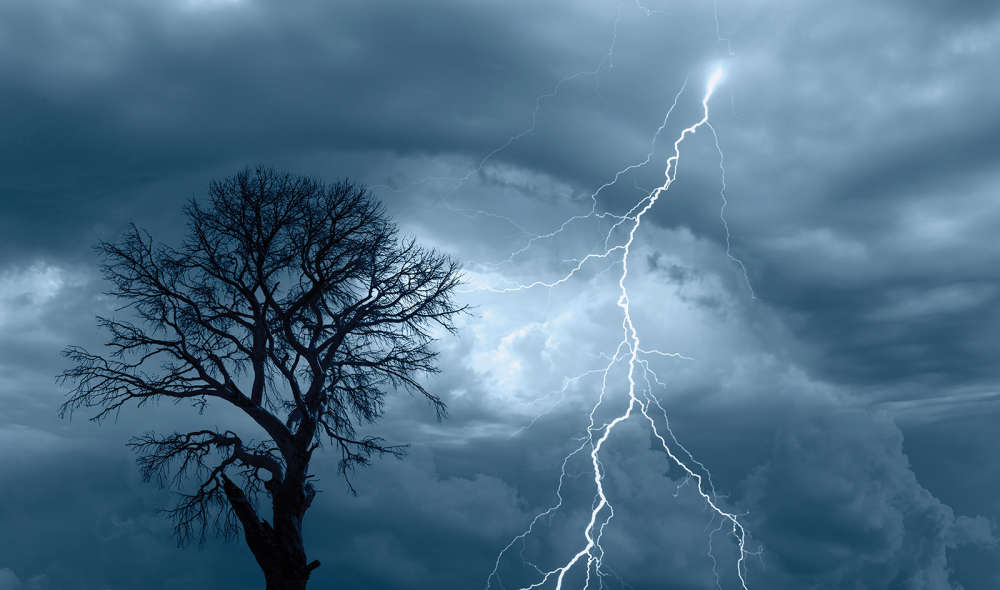
When trees get struck by lightning it can be a very dramatic event, as Peter Erridge explains
Readers may be aware of the lightning strike on 18 November 2022 that affected a Giant Redwood tree (Sequoiadendron giganteum) in Sheffield Park. This tree was planted in 1895 and at 30m (100ft) high was a landmark familiar to many local to the area. Another nearby Giant Redwood suffered a similar fate in 2012.
The common name of these imposing trees is Wellingtonia named after the victor at the Battle of Waterloo. Seeds of these trees came to Britain in 1853 the year after the Duke of Wellington’s death. They can grow to over 95m (300ft) and live for 3,000 years. The wood is rot proof and the bark is fire resistant.
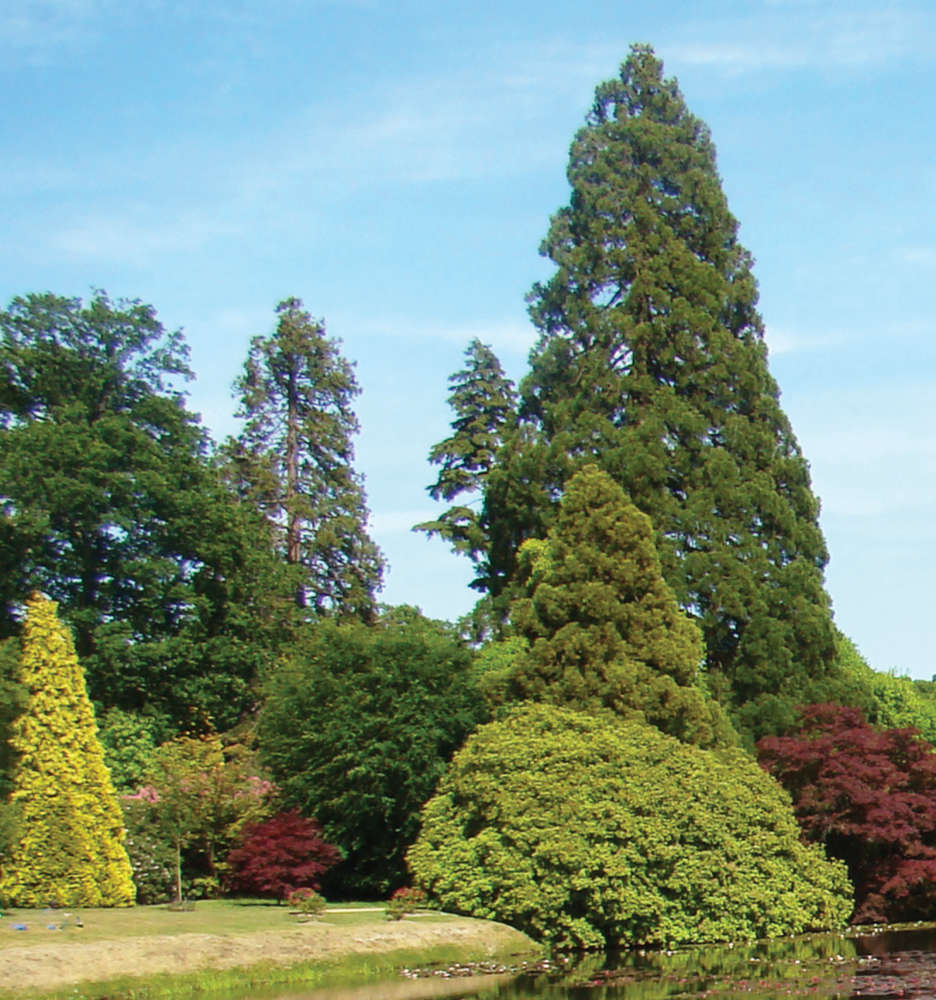
So how did these two trees get struck by lightning? Lightning is a natural electrostatic discharge between clouds often reaching the ground. It will strike anywhere from beneath the storm up to three miles away. The discharge travels down the path of least resistance such as a tall building or tree or a church spire. Trees are frequently struck as hey can be the tallest objects in the area and have a lot of moisture within the trunk, especially those near water.
Strikes travel at 250,000mph, can be a million volts and generate temperatures of 20,000C (54,000F). A good reason not to shelter under a tree during a thunderstorm. Most susceptible to strikes are Conifer and Oak trees which grow tall whilst Ash, Poplars and Willow have a high water content and are more likely to attract lightning.
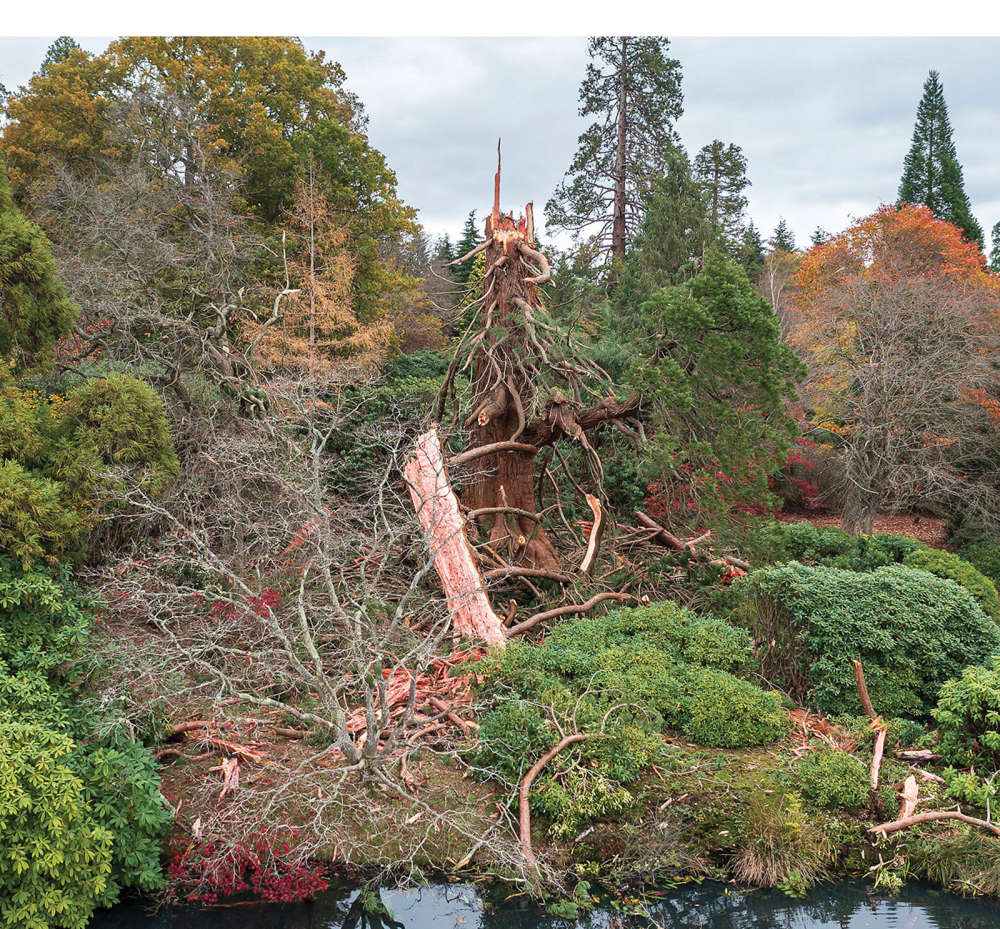
(image: John Miller)
The effects of a lightning strike to a tree may show in one of several ways. Should the outer layer of bark be very wet this will conduct the surge and the result will be a vertical strip of dead bark. Wood behind the scar decays over time but the tree can survive if the scar is not too deep. Another way is that the trunk may not be affected but the surge has been dispersed among the roots which could lead to the death of the plant.
A tree can sometimes die without an obvious cause when it has suffered a minor strike due to water within its cells heating up and bursting, so disrupting the health of the plant and leading to fungal disease within the trunk and later death.
Alternatively the current may travel within the trunk causing the sap to boil and burst through the bark to show as an area of froth. In another scenario, when the tree is relatively dry the heat of the strike causes gases to form which then ignite and the trunk explodes. Debris is then scattered afar which may have happened in the November 2022 event.
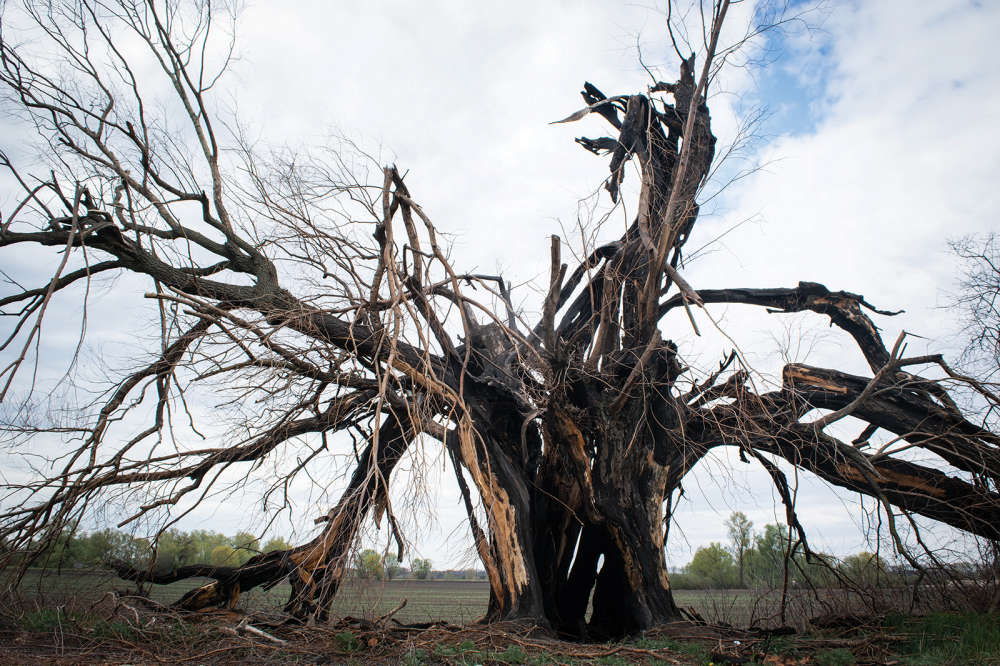
Another effect of lightning is that oxygen and nitrogen in the air bond to form acidic compounds which fall as acid rain. This can have harmful effects on plants, forests, aquatic life forms, soils, microbes, and insects. In the 1980s streams on Ashdown Forest became more acidic which is more favourable to Golden Ring dragonfly breeding so sightings were more frequent.
Was this an effect of lightning strikes?
Until the late 18th century it was thought that ringing church bells would repel lightning. But being in a high tower with a metal bell was not
a good idea. In France between 1753 and 1786 103 bell ringers were killed. Another myth is that there is no danger from lightning if it is not raining but lightning flashes travel at very high speed, miles ahead of a storm. Plug-in surge protectors are designed to control variations from your electrical supplier but they can’t control a massive lightning surge, which can cause harm to electronic equipment.
As we see the effects of climate change altering the natural world around us, it is likely there will be an increase in thunderstorms with greater intensity. This means that tree damage is more likely and ancient trees such as the beloved Giant Redwood in Sheffield Park, which generations of children have loved, will more likely be victims of lightning strikes.
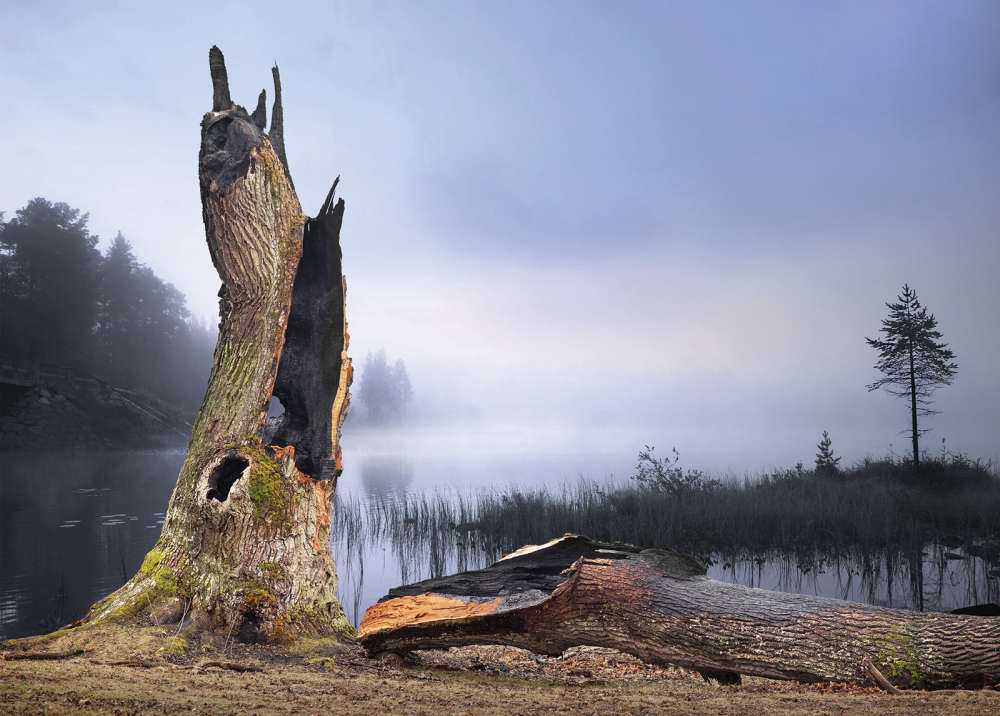

 Home Style: Colourful New Life
Home Style: Colourful New Life
 Money Matters: Release Reality
Money Matters: Release Reality
 World Listening Day 2024: Learning to Listen to our Environment
World Listening Day 2024: Learning to Listen to our Environment
 Spotlight Events: What's On in July 2024
Spotlight Events: What's On in July 2024
 RSPCA Celebrates 200 Years
RSPCA Celebrates 200 Years
 Be Well, Move Happy: Learning a New Skill and Water Sports
Be Well, Move Happy: Learning a New Skill and Water Sports
 10 Ideas for a Screen-Free Summer
10 Ideas for a Screen-Free Summer
 Home Style: Bold Type
Home Style: Bold Type
 What to Watch in July 2024
What to Watch in July 2024
 The Exciting Appeal of the Beach Holiday
The Exciting Appeal of the Beach Holiday
 "I quite like to end up with a setlist that involves a catalogue of human misery..." Nish Kumar on his return to stand-up comedy
"I quite like to end up with a setlist that involves a catalogue of human misery..." Nish Kumar on his return to stand-up comedy
 Money Matters: The Revenue Generation
Money Matters: The Revenue Generation
 Home Style: A Better Way of Life
Home Style: A Better Way of Life
 Weddings: The Food of Love
Weddings: The Food of Love
 Vino, Vidi, Vici: The Vineyards, Breweries & Distilleries of Sussex
Vino, Vidi, Vici: The Vineyards, Breweries & Distilleries of Sussex
 Homes Extra: Digging a Design
Homes Extra: Digging a Design
 Listening to Nature: Meet the people behind the Ashdown Forest podcast
Listening to Nature: Meet the people behind the Ashdown Forest podcast
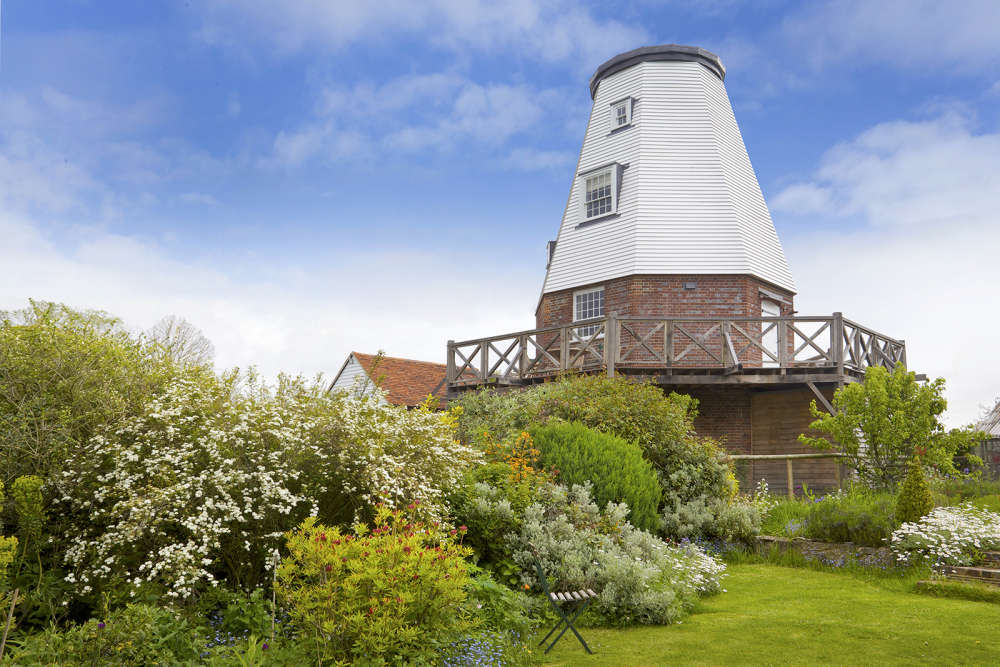 Home Style: Tales from the Mill
Home Style: Tales from the Mill
 SPECIAL OFFER: General Admission Tickets To The Al Shira’aa Hickstead Derby Meeting
SPECIAL OFFER: General Admission Tickets To The Al Shira’aa Hickstead Derby Meeting
 A Gourmet Escape on the Eurostar: London to Amsterdam with Culinary Delights in Almere
A Gourmet Escape on the Eurostar: London to Amsterdam with Culinary Delights in Almere